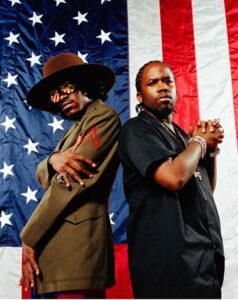

Knowledge can be a snowball, where print and digital entwine to bring not only the who, what, when, and where of history into view, but also perspectives beyond one’s own background. This chain of events-from book to blog and down the digital rabbit hole of music history-represents the possibilities of the information age. Encouraged by Jaki Byard, I began challenging myself to re-hear this music as a statement of alternate belonging.

8 I began to wonder about these jazz musicians and their decision to perform “Lift Every Voice.” I began to question why I had, to this point, failed to hear these versions, even though I devote most of my scholarly attention to the political aurality of jazz.
#Outkast stankonia rapgenius archive#
While listening, I began to reflect on the increased circulation of the Black musical archive through such digital infrastructures. The latter led me even further, to versions by Cyrus Chestnut, Wycliffe Gordon with Eric Reed, Charles Lloyd, Geri Allen, Nnenna Freelon, René Marie, Les McCann, and Art Blakey. I traveled from Mingus to the Boys Choir of Harlem and Jazzmeia Horn. A simple keyword search created a path for my listening session. My own return to Perry’s writing through a blog post mirrored my return to Byard’s performance, which I accessed through a digital streaming service designed to encourage musical connections. It was also an invitation to again engage with Perry’s work, including her active (and essential) Twitter profile. 7 Timed for Independence Day, the review was an occasion to think about the anthem’s power across history and consider how citizenship is always multiple but rarely even.

Ball’s Jpost appeared on Black Perspectives, the blog of the African American Intellectual History Society (AAIHS). I recently returned to Okiji’s analysis of Byard’s performance after reading Erica Ball’s review of We Forever Stand: A History of the Black National Anthem by Imani Perry. My listening is not just a quotation, but a digital echo. 6 Okiji asks us to hear Byard’s quotations as inseparable from the sociopolitical struggle over Black personhood. “Lift Every Voice” is, of course, also known as the Black national anthem-thus, Byard’s juxtaposition of that melody with “Yankee Doodle” imagines an alternate mode of being and belonging. 5 In Byard’s hands, the interwoven quotations of “Yankee Doodle” and “Lift Every Voice” speak to the seriousness of Black resistance and Black belonging to a nation founded on Black enslavement. After all, Mingus wrote “Fables of Faubus” as a direct response to Arkansas governor Orval Faubus’s notorious (and unlawful) refusal to desegregate Little Rock Central High School in 1957. That is to say: Byard knew what he was doing. Blackness is always a social marker, she writes, and so Black life “cannot help but be lived as critical reflection.” 4 Because the boundaries of Black humanity are always caught in the (im)possibilities of performance, she goes on, jazz exposes the political reality of the everyday. In Jazz as Critique, Fumi Okiji analyzes Byard’s playful yet multilayered performance on “Fables of Faubus” as a statement about the sociomusicality of Black life. 2 By this time, the ensemble has once more joined together.

A few virtuosic flourishes travel into the highest range of his instrument (7:55) as if echoing the first stanza of James Weldon Johnson’s poem: “Let our rejoicing rise / High as the listening skies.” Eventually, Byard transitions back into a halting, even stuttering version of “Yankee Doodle.” Again, he ends in misdirection, through a quotation of Frédéric Chopin’s funeral march (8:09). Rather than the expected resolution to “Yankee Doodle,” Byard instead seamlessly transitions into “Lift Every Voice and Sing.” Despite his hymn-like recitation, he dwells in restlessness. He jumps from the dramatic to the playful to the playfully dramatic through quotation, interweaving a number of quick ascending scales between melodic fragments of “Yankee Doodle Dandy.” Dannie Richmond’s snare drum echoes Byard’s revolutionary invocation (7:30). About seven minutes into Charles Mingus’s lengthy 1964 performance of “Fables of Faubus,” Byard’s solo emerges out of the slowly decelerating ensemble. James Weldon Johnson, “Lift Every Voice and Sing” 1 Featured image: I won’t be quiet so you can be comfortable, Washington DC, August 2020, Copyright Erica Jae.


 0 kommentar(er)
0 kommentar(er)
